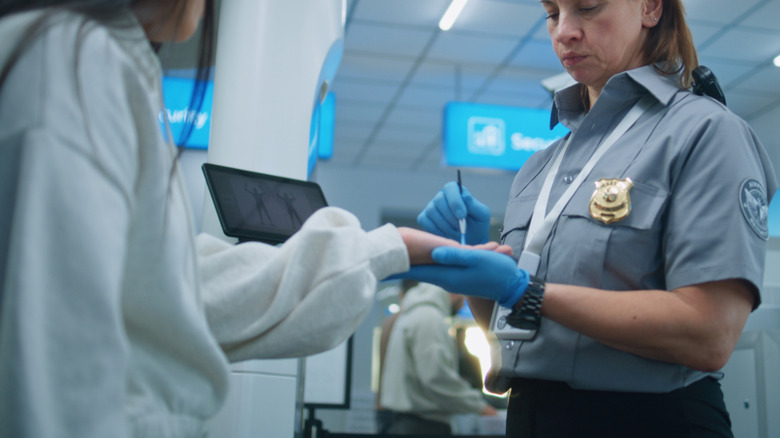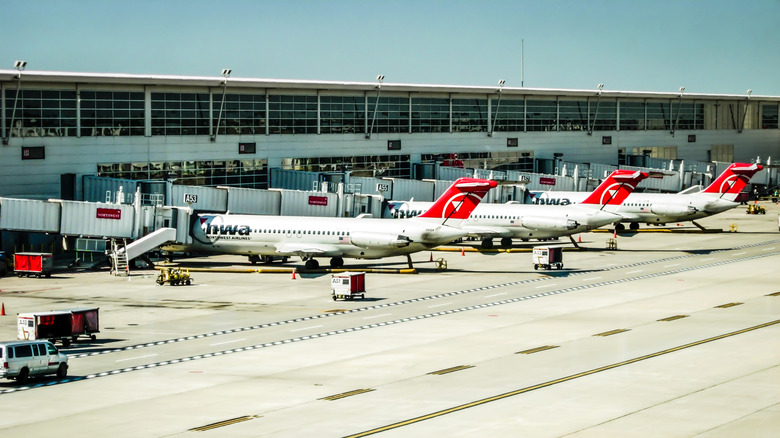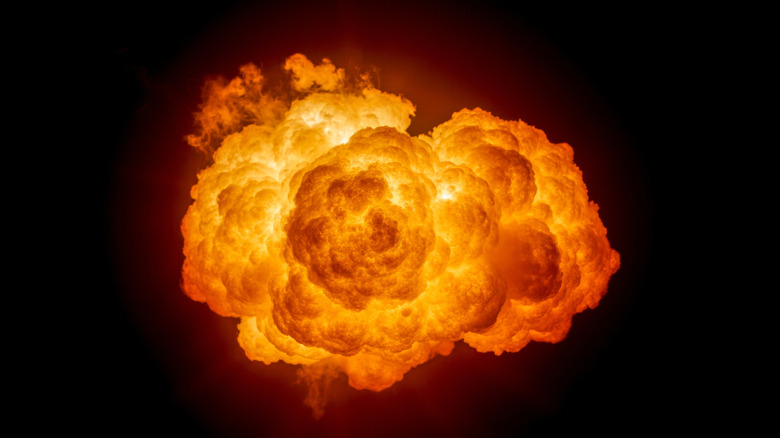Why Does TSA Actually Wipe Your Hands
If you've flown on a commercial airline in the last 15 years, it may have happened to you. A Transportation Security Administration (TSA) agent approaches wearing blue rubber gloves and holding a small plastic wand with fabric attached at the end. They tell you to hold out your hands, palms up, and then begin running the fabric up and down them. Then they stick the fabric in a small machine, and a few seconds later, they tell you to continue through the security line. Or, if the explosive trace detector has found tiny amounts of nitroglycerin, glycerin, nitrates, or similar chemicals, you may be in for further screening.
TSA hand-swabbing procedure began in 2010 following an attempted bombing on a Northwest flight over Detroit on Christmas Day 2009 and has continued to this day. The agency conducts this screening to determine if someone might have been handling explosives recently. To do this, they rely on explosive trace detectors that can detect minute amounts of chemical residue.
How explosive trace swabbing got started
On Christmas Day 2009, Umar Farouk Abdulmutallab, an al-Qaeda terrorist from Nigeria known as the "underwear bomber," attempted to blow up Northwest Airlines Flight 253 on route to Detroit from the Netherlands. The bomb hidden in his underwear didn't blow up, but it did cause a small fire. Abdulmutallab later admitted his guilt and is currently serving a life sentence in federal prison. Soon afterward, the TSA expanded its explosive trace swabbing program. The agency had already been swabbing carry-on luggage, but it began doing it to passengers' hands as well.
This was a far cry from times when airline passengers could openly carry rifles on planes, among other bizarre things people were able to do on airplanes in the past. But flying had changed in the wake of the 9/11 terrorist attacks and subsequent similar incidents on planes. "We know that al-Qaeda [and other] terrorists continue to think of aviation as a way to attack the United States," then-Homeland Security secretary Janet Napolitano told CNN in February 2010. Hand swabbing has become an extra layer of protection, and TSA apparently needs all the help it can get. An undercover Department of Homeland Security investigation in 2015 found that TSA agents failed to find 95% of hidden weapons and fake bombs during breach tests — just one of the secrets airports don't want you to know.
How does the explosive trace detector work?
The TSA typically uses two kinds of explosive trace detectors: a handheld version and a desktop-sized one. Both work in similar ways. As Dr. Laura Parker, a chemist with the Department of Homeland Security's Explosives Division, explained in a TSA interview, these devices use an analytical chemistry technique called ion-mobility spectrometry. "That pretty much looks at the size and shape of molecules, compares it to a library of many chemicals, and then gives an outcome," she said.
The explosive trace detectors are tuned to look for "chemicals of interest" that are commonly used to make bombs. Among these are nitrates and glycerin. If you have been flagged, it doesn't mean you were actually handling explosives — many of the chemicals that the TSA are looking for are also found in some hair care products, soaps, fertilizers, and fireworks, among other items. The most likely outcome is further screening, like a pat down. As long as you're not one of those people who have tried to sneak crazy things onto an airplane, from cow brains to tiger cubs, you should be fine.


